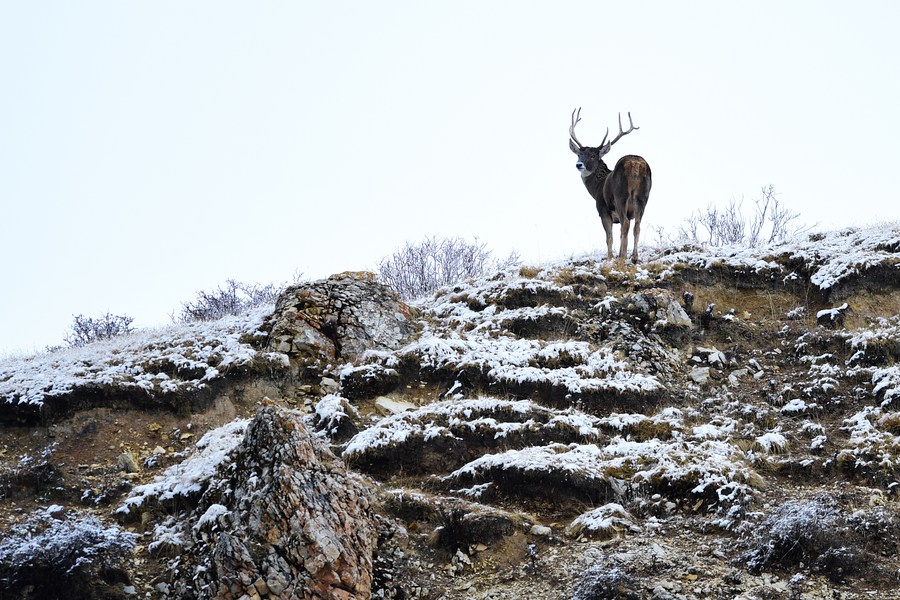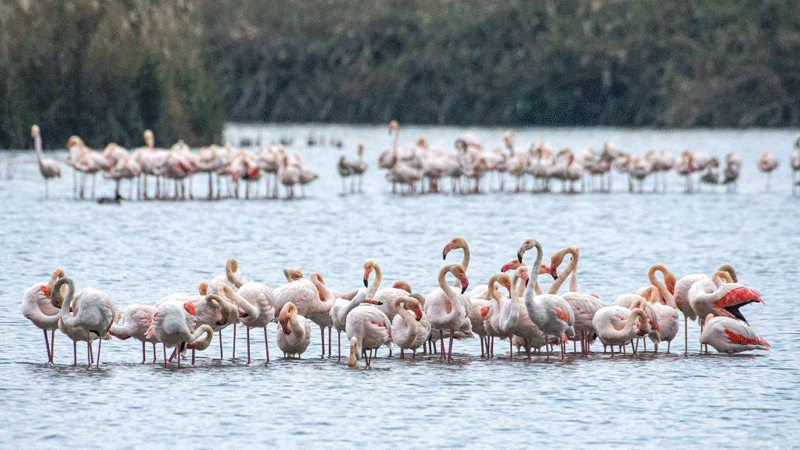Plateau province makes significant strides in biodiversity conservation

Photo taken on Oct. 19, 2021 shows a white-lipped deer at the source of the Yellow River section of the Sanjiangyuan National Park in Golog Tibetan Autonomous Prefecture of northwest China's Qinghai Province. (Xinhua/Zhang Long)
XINING, Dec. 9 (Xinhua) -- The Qilian Mountain National Park, located at the junction area of northwest China's Gansu and Qinghai provinces, unveiled its progress in biodiversity conservation on Wednesday.
The Qilian Mountains straddle the border between Gansu and Qinghai and are a major mountain range with an average altitude of over 4,000 meters. This mountain range is an important water source of the Yellow River, China's second-longest, and a key ecological shield in western China.
According to a latest survey, there are 280 species of wild vertebrates and 522 species of wild invertebrates distributed in the national park areas in Qinghai; 543 species of vascular plants; 203 species of macrofungi, and 575 species of aquatic organisms.
Han Qiang, deputy director of the park's Qinghai administration, noted that 10 new species of insects have been discovered.
Han attributed the achievements in biodiversity conservation to the integrated protection and systematic management of mountains, rivers, forests, lakes and grassland over the years, which have continuously and effectively improved the ecological environment of the park.
Qinghai is also home to Sanjiangyuan National Park. Sanjiangyuan literally means the headwaters of the three rivers of the Yangtze, Yellow and Lancang, and the Sanjiangyuan area is known as Asia's "water tower".
The latest report released by Sanjiangyuan National Park showed that the population of Tibetan antelopes in Hol Xil in the hinterland of the Qinghai-Tibet Plateau has recovered from less than 20,000 in the mid and late 1980s to more than 70,000. The species is now no longer endangered but downgraded to "near threatened".
Wildlife species such as snow leopards and Eurasian otters were rarely seen in the past, but they have been spotted frequently in recent years.
China began the pilot operation of Sanjiangyuan National Park in 2016, and last October, the park received its official designation.
Due to years of efforts in improving wildlife habitats and conservation of ecosystems, the population of wild animals has increased remarkably in the Sanjiangyuan National Park, making it a real heaven for wildlife, said Sun Lijun, deputy director of the park administration.
Qinghai Lake, China's largest inland saltwater lake, has also seen improvements in its biodiversity. The lake is an important ecological barrier in northern China and a key stopover site for migrant birds.
Data showed that more than 230,000 waterbirds were spotted during the autumn migration period in the lake this year, a record high, noted He Yubang, director of Qinghai Lake National Nature Reserve Administration.
He said that conservation projects such as protection and restoration of water ecological environment in key areas, wetland protection and restoration work, and patrolling and monitoring of biodiversity have been carried out in the lake this year.
Photos
Related Stories
- UN chief appeals for more fund from developed countries to help preserve biodiversity
- Preparation for second part of COP15 underway in Montreal, Canada
- Post-2020 global biodiversity framework to dominate key UN conference
- Hainan sows seed of better biodiversity protection
- China to enhance prevention, control of invasive alien species
- Blood pheasants spotted in Qinghai
Copyright © 2022 People's Daily Online. All Rights Reserved.









